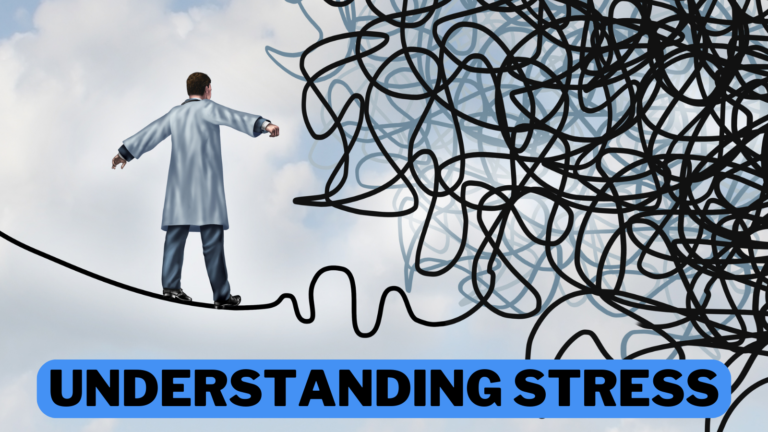Understanding Good Mental Health In The Workplace
Understanding Good Mental Health In The Workplace
In the intricate tapestry of professional life, the significance of good mental health in the workplace cannot be overstated.
As the boundaries between work and personal life blur, the impact of our professional environment on mental well-being has gained heightened attention.
In this article, we embark on a journey to unravel the complexities surrounding mental health within the workplace.
In exploring workplace dynamics, understanding good mental health emerges as a fundamental element, acknowledging its profound impact on the overall well-being and dynamics of the professional environment.
By acknowledging the symbiotic relationship between employee well-being and organizational success, we aim to illuminate the path toward workplaces that thrive professionally and prioritize the mental health and happiness of those who contribute to their success.
Join us as we explore the strategies, cultural shifts, and individual responsibilities that contribute to creating a workplace where mental health is acknowledged, nurtured, and prioritized.

The Importance Of Good Mental Health In The Workplace
Mental health in the workplace is paramount, influencing individual well-being and organizational success.
Employees facing mental health challenges can experience heightened stress, reduced productivity, and increased absenteeism.
It's critical to recognize the warning signs of mental health problems because doing so enables early support and intervention.
A positive work culture prioritizing mental health fosters open communication, reducing stigma and encouraging employees to seek help.
Promoting mental health in the workplace goes beyond mere empathy; it translates into tangible benefits for employees and the organization.
A positive work environment enhances morale, engagement, and overall job satisfaction. Employees are likelier to contribute their best work when they feel supported and valued.
Employers who support mental health initiatives also frequently see lower employee attrition and greater employee retention.
To create a mentally healthy work environment, leadership is essential. When leaders prioritize and model well-being, it creates a ripple effect throughout the organization.
By recognizing the importance of mental health, companies demonstrate a commitment to their employees' holistic well-being and cultivate a resilient and thriving work culture that contributes to long-term success.

Why It’s Important To Address Good Mental Health In the Workplace
It's imperative to address mental health in the workplace because it directly impacts worker productivity and well-being.
The demanding and fast-paced nature of today's workplace contributes to workers' stress, anxiety, and burnout.
Ignoring mental health issues may have negative effects on performance overall, absenteeism, and job satisfaction.
Prioritizing mental health creates a supportive work culture where employees feel valued and understood.
Open conversations about mental well-being reduce the stigma associated with seeking help, fostering an environment where individuals are more likely to address challenges early on.
This proactive approach not only benefits the individual but also prevents the escalation of mental health issues.
A mentally healthy workplace is linked to higher employee engagement, increased creativity, and improved collaboration.
Workers who experience mental health support are more likely to be authentic at work, which fosters a welcoming and positive workplace culture.
Furthermore, addressing mental health contributes to decreased turnover rates, as employees are likelier to stay in an environment that prioritizes their holistic well-being.
In essence, focusing on mental health is not just a compassionate gesture; it's a strategic investment in the long-term success and sustainability of both individuals and the organization.

How Do You Recognize Your Mental Health Problem In Your Workplace?
Recognizing a mental health problem in the workplace involves self-awareness and a willingness to acknowledge changes in one's thoughts, emotions, and behaviours.
First, notice any changes in your mood, such as enduring melancholy, anxiety, or irritability.
Notice changes in sleep patterns, appetite, and energy levels, as these can be indicators of emotional well-being.
Reflect on your work performance. A noticeable decline in concentration, decision-making ability, or productivity may be linked to mental health challenges.
Feelings of being overwhelmed, persistent stress, or an inability to cope with tasks are also red flags.
Listen to feedback from colleagues, friends, or family who may observe changes you might not notice. If trusted individuals express concerns, take their input seriously.
Fostering an understanding of good mental health in the workplace and being attuned to physical manifestations of stress, such as headaches or muscle tension, is a proactive approach to encouraging timely support and open dialogues within the professional sphere.
Recognizing these signs early on enables individuals to seek support through Employee Assistance Programs, counselling, or open conversations with supervisors and colleagues.

Exploring Work-Related Risk Factors That Can Harm Mental Health
Work-related risk factors can significantly impact mental health, contributing to stress, anxiety, and other mental health challenges among employees.
Several key factors within the workplace can act as stressors, and recognizing them is crucial for fostering a mentally healthy work environment.
1. High Workload and Pressure
Excessive workloads, tight deadlines, and unrealistic expectations can create an environment of constant pressure, leading to stress and burnout.
2. Lack Of Job Control
Limited autonomy and decision-making authority can contribute to frustration and helplessness, negatively affecting mental well-being.
3. Poor Work-Life Balance
When employees cannot balance work and personal life, it can lead to chronic stress, impacting mental health inside and outside the workplace.
4. Inadequate Support Systems
Lack of support from supervisors or colleagues, as well as insufficient access to resources for managing mental health, can exacerbate feelings of isolation and stress.
5. Unclear Job Expectations
Ambiguity regarding job roles and expectations can create uncertainty and anxiety, affecting an individual's sense of competence and job satisfaction.
6. Limited Career Growth Opportunities
Frustration and discontent can result from stagnation in one's professional development or from the sense that one has few opportunities for promotion.
7. Poor Interpersonal Relationships
Workplace conflicts, bullying, or a lack of positive social interactions can contribute to a toxic work environment, negatively impacting mental health.
8. Job Insecurity
Fear of job loss or uncertainty about employment can be a significant source of stress and anxiety among employees.
Recognizing and addressing these work-related risk factors is essential for creating a mentally healthy workplace.
Employers can implement strategies such as promoting work-life balance, providing mental health resources, fostering open communication, and addressing issues related to job expectations and interpersonal relationships.
Organizations can create a supportive environment that prioritizes mental health and enhances their employees' well-being and productivity.

How Can Mental Health Issues Affect One's Job?
Understanding good mental health in the workplace is pivotal, as it involves recognizing how conditions like anxiety, depression, or bipolar disorder can significantly affect motivation, energy levels, and overall job performance, emphasizing the interconnectedness of personal well-being and professional success.
Firstly, conditions such as anxiety, depression, or bipolar disorder can lead to a decrease in overall motivation and energy levels.
This reduction in motivation may result in decreased productivity and a lack of enthusiasm for once-managed tasks.
Concentration and focus, essential components of effective job performance, can be significantly compromised by mental health challenges.
People may struggle to focus, make choices, or solve issues, eventually lowering their work's calibre.
Moreover, physical symptoms like weariness, insomnia, or changes in appetite are frequently signs of mental health problems.
Employees may require time off to address mental health issues or manage the physical effects of their condition, which can lead to a rise in absenteeism.
Mental health issues can also strain interpersonal relationships in the workplace. Social withdrawal, irritability, or difficulty in communication may lead to conflicts with colleagues, impacting teamwork and collaboration.
Absenteeism and presenteeism, where employees are physically present but not fully engaged, are common consequences of mental health challenges.
Delayed or incomplete projects, as well as a general deterioration in the calibre of the work, can arise from this.
Finally, people who need support may find it difficult to get it because of the stigma attached to mental health.
Employees who are afraid of being judged or subjected to discrimination may not disclose their difficulties or ask for the accommodations they need, which worsens the effect on their jobs.
The intricate relationship between mental health and job performance highlights the significance of creating a supportive work environment that values open communication, offers resources for mental health, and fosters an empathetic and understanding culture.
This benefits individual employees and contributes to a more resilient and thriving workplace.

Why Don’t People Talk About Mental Health In The Workplace?
Several factors contribute to the hesitancy around discussing mental health in the workplace, perpetuating a culture of silence and stigma.
Firstly, there remains a pervasive societal stigma surrounding mental health issues. Despite significant strides in destigmatizing mental health, there is still a fear of judgment and discrimination.
Individuals may worry about being perceived as weak or incapable, potentially impacting their professional reputation and opportunities for advancement.
Moreover, there is often a lack of awareness and education about mental health in the workplace.
Many employees, and even employers, may not fully understand the complexities of mental health issues, leading to discomfort or avoidance of the topic.
The workplace itself can play a role in fostering or inhibiting discussions about mental health.
Cultures that prioritize productivity over well-being may inadvertently discourage open conversations about mental health.
Employees may fear repercussions, believing that discussing their struggles could be perceived as a lack of commitment to their jobs.
Additionally, some individuals may not recognize their mental health challenges or may minimize their significance.
This lack of self-awareness, coupled with societal and workplace stigma, creates a barrier to initiating conversations about mental well-being.
Fear of vulnerability also plays a role. Employees may worry that disclosing mental health struggles could make them appear vulnerable or expose personal weaknesses.
This fear of appearing less competent or resilient than their peers can significantly deter open dialogue.
Understanding good mental health in the workplace is foundational to addressing barriers and fostering a culture that prioritizes mental health and actively promotes education, resources, and open conversations, breaking the silence to create supportive environments that uphold the well-being of all employees.
Breaking the silence around mental health is essential for creating supportive work environments that prioritize the well-being of all employees.
The Impact Of Poor Employee Mental Health In The Workplace
The impact of poor employee mental health in the workplace is multifaceted, affecting both individuals and the overall dynamics of the organization.
Firstly, productivity takes a substantial hit when employees are grappling with mental health challenges.
Decreased concentration, lower energy levels, and increased absenteeism contribute to a decline in overall work output.
The quality of work may suffer as well, as individuals find it challenging to maintain the same standards during periods of mental distress.
Morale and employee engagement are also severely impacted. Employee turnover rates may increase if there is a decline in job satisfaction among those who are dealing with mental health issues.
Anxiety in the workplace can lead to strained relationships between coworkers and a decline in team spirit.
Moreover, poor mental health can contribute to increased healthcare costs for both employees and employers.
Individuals facing mental health challenges may require medical interventions, therapy, or time off for recovery.
These costs, coupled with the expenses associated with hiring and training replacements for departing employees, underscore the economic toll of neglecting mental well-being in the workplace.
Organizational reputation is not immune to the impact either. Companies perceived as disregarding employee mental health may face reputational damage and challenges in attracting and retaining top talent.
Recognizing and addressing poor employee mental health is a matter of compassion and an essential strategic imperative for organizations aiming to foster a healthy, engaged, and productive workforce.
Understanding good mental health in the workplace is integral for organizations seeking to cultivate a compassionate and strategically sound approach, where initiatives fostering awareness, support, and a stigma-free environment become vital pillars in prioritizing the overall well-being of their workforce.
Strategies For Encouraging Mental Wellness At Work
Fostering mental well-being in the workplace is crucial to building a positive and encouraging atmosphere. The following are specific methods to promote mental health in workers:
1. Skill Development Programs
Offer workshops and training programs on stress management, resilience-building, and coping strategies. Providing employees with practical skills enhances their ability to navigate challenges effectively.
2. Peer-Led Initiatives
Establish employee-led mental health committees or affinity groups to encourage peer support. This allows employees to share experiences, tips, and resources in a supportive community.
3. Mindfulness And Relaxation Practices
Introduce mindfulness programs or relaxation sessions, such as guided meditation or yoga classes. These practices help reduce stress, improve focus, and enhance overall mental well-being.
4. Communication Channels
Establish clear channels for employees to express their concerns, feedback, or mental health needs.
Encourage open communication through suggestion boxes, anonymous surveys, or regular town hall meetings.
5. Promote Social Connections
Encourage social interactions among employees. Organize team-building activities, social events, or virtual gatherings to foster community and belonging.
6. Recognize Mental Health Awareness Months
Acknowledge and participate in mental health awareness months or campaigns. This can be an opportunity to engage employees in discussions, share resources, and promote awareness.
7. Accessibility Accommodations
Ensure workplace facilities are accessible to employees with mental health conditions. This includes considerations for physical layout, noise levels, and access to natural light.
8. Anonymous Reporting Mechanisms
Implement confidential reporting mechanisms for employees to report concerns related to mental health without fear of retaliation. This can assist in recognizing and resolving problems early on.
9. Educational Workshops
Host workshops on stress management, resilience, and maintaining mental health during challenging times. Invite experts to provide insights and guidance.
10. Promote Healthy Lifestyle Choices
Encourage healthy choices by providing nutrition, exercise, and sleep hygiene information. A balanced lifestyle contributes to both physical and mental well-being.
11. Ergonomic Workspaces
Design workspaces with employee well-being in mind. Consider ergonomic furniture, natural lighting, and proper ventilation to create a comfortable and conducive work environment.
12. Flexible Mental Health Days
Implement flexible mental health days, allowing employees to take time off as needed without the stigma associated with traditional sick days.
13. Mental Health First Aid Training
Provide Mental Health First Aid training for designated employees. This gives them the ability to identify and handle mental health emergencies at work.
14. Regular Feedback Sessions
Conduct regular feedback sessions with employees to gather insights into the effectiveness of mental health initiatives. Use feedback to make adjustments and improvements.
15. Accessibility of Mental Health Apps
Provide information and access to mental health apps that offer stress management, meditation, and mental health tracking resources.
Understanding good mental health in the workplace is central to implementing a comprehensive strategy that not only tailors approaches to the organization's specific needs but also involves regular assessments to ensure the effectiveness of initiatives, fostering a positive and productive workplace culture that prioritizes the well-being of individuals.
Regularly assess the effectiveness of initiatives and be responsive to evolving employee needs.
Prioritizing mental health benefits individuals and contributes to a positive and productive workplace culture.
16. The Impact Of Mental Wellness On The Job
Good mental health in the workplace catalyzes a thriving and productive organizational ecosystem.
Firstly, enhanced employee well-being translates into increased job satisfaction and overall happiness.
Individuals experiencing good mental health are more likely to approach their tasks with enthusiasm and commitment, fostering a positive work atmosphere.
Productivity sees a significant upswing in mentally healthy workplaces. Employees exhibit improved concentration, creativity, and problem-solving skills.
This heightened cognitive function contributes to more efficient and innovative outcomes, benefiting the organization.
Positive mental health creates resilient teams capable of navigating challenges with adaptability and fortitude.
Stress levels decrease, reducing the likelihood of burnout and absenteeism. This, in turn, leads to higher levels of employee retention, saving the organization recruitment and training costs.
Effective communication becomes a hallmark of mentally healthy workplaces. Employees feel more comfortable expressing their ideas, concerns, and feedback, leading to stronger team cohesion and better decision-making processes.
Moreover, a mentally healthy workplace fosters a supportive culture where employees feel valued and heard.
This, in turn, nurtures a sense of belonging and loyalty, positively impacting organizational culture and reducing conflicts.
From an organizational standpoint, investing in employee mental health pays dividends.
Companies prioritizing mental well-being are more likely to attract top talent, creating a competitive advantage in the market.
Additionally, the positive reputation garnered by such organizations enhances customer and client relationships.
In summary, the effects of good mental health in the workplace are far-reaching, influencing individual well-being, team dynamics, and organizational success.
Prioritizing mental health enriches employees' work lives and contributes to a resilient, innovative, and thriving workplace culture.
Conclusion
In delving into the realms of understanding good mental health in the workplace, it becomes evident that fostering a culture that values and prioritizes mental well-being is not just a choice but a strategic imperative.
The interconnectedness of individual mental health with overall workplace dynamics underscores the significance of proactive initiatives, from education and resource provision to destigmatizing conversations.
A workplace that comprehensively addresses mental health concerns is poised for resilience and productivity.
The conclusion is clear: organizations must recognize the profound impact of mental health on their most valuable asset—their people.
Understanding good mental health in the workplace is not merely a consideration but the cornerstone of a progressive and compassionate professional landscape.
I trust you enjoyed this article on Understanding Good Mental Health In The Workplace. Please stay tuned for more blog posts to come shortly. Take care!
JeannetteZ
>>>Please click here to read my all-inclusive article about Lessons That Will Teach You All About Stress<<<
>>>Are you interested in Natural Healing And Stress Relief Through Herbs? Please click here for my #1 Recommendation<<<
Your Opinion Is Important To Me
Thoughts? Ideas? Questions? I would love to hear from you. Please leave me your questions, experiences, and remarks about this article on Understanding Good Mental Health In The Workplace in the comments section below. You can also reach me by email at Jeannette@Close-To-Nature.org.
Disclosure
This post may contain affiliate links. I earn from qualifying purchases as an Amazon Associate and other affiliate programs. Please read my full affiliate disclosure.
You might also enjoy these blog posts:
How To Use Meditation For Better Sleep
Best Practices For Living A Life Of Gratitude








